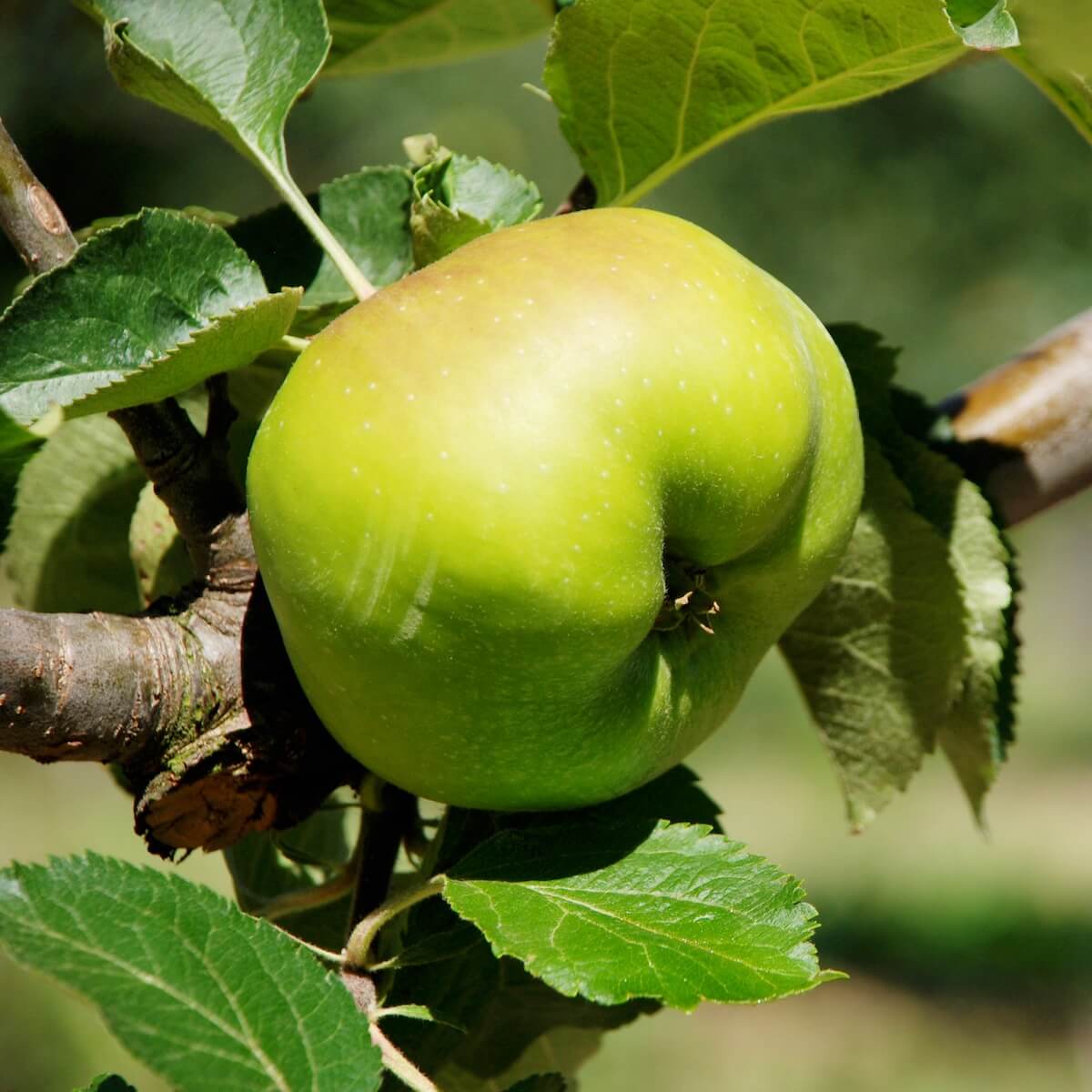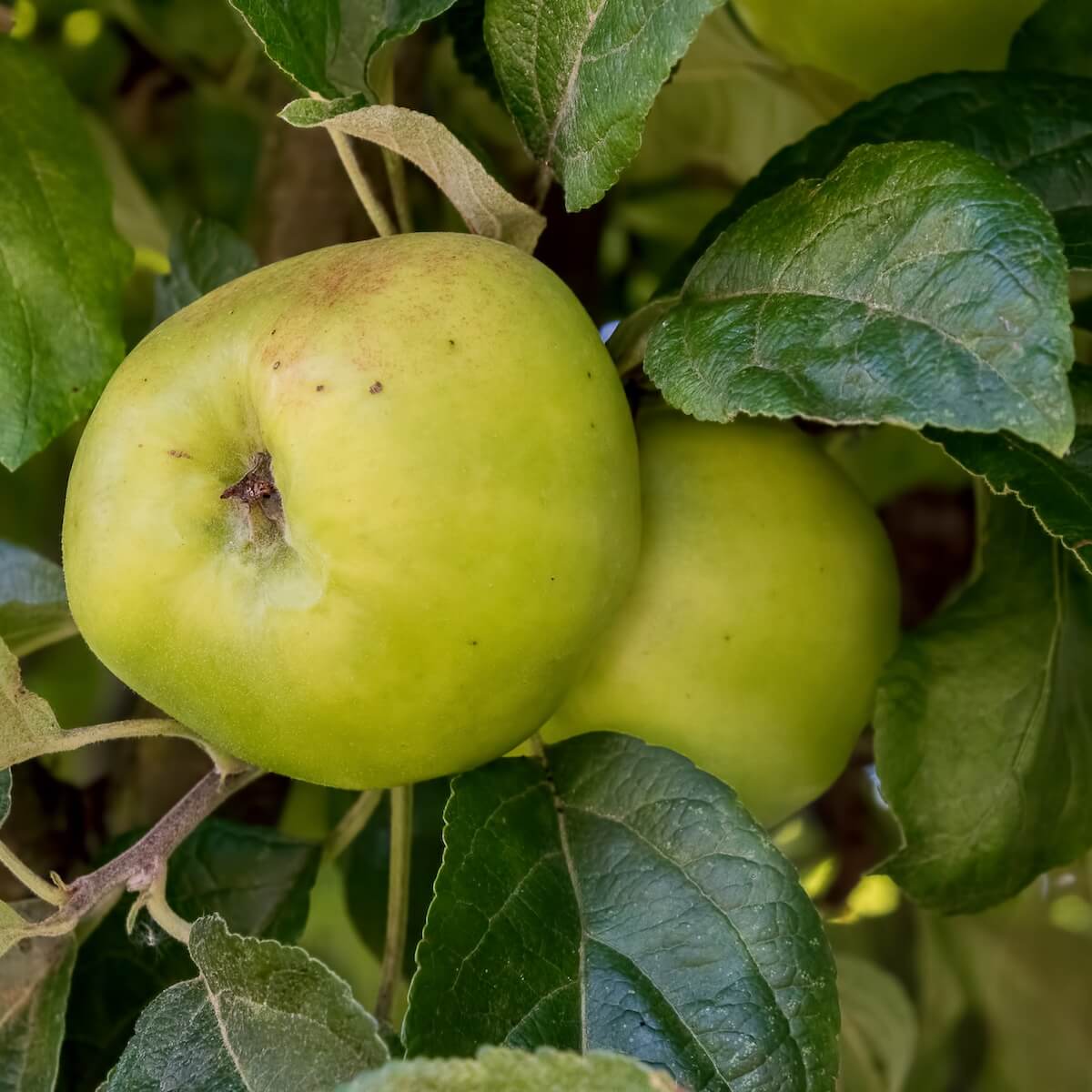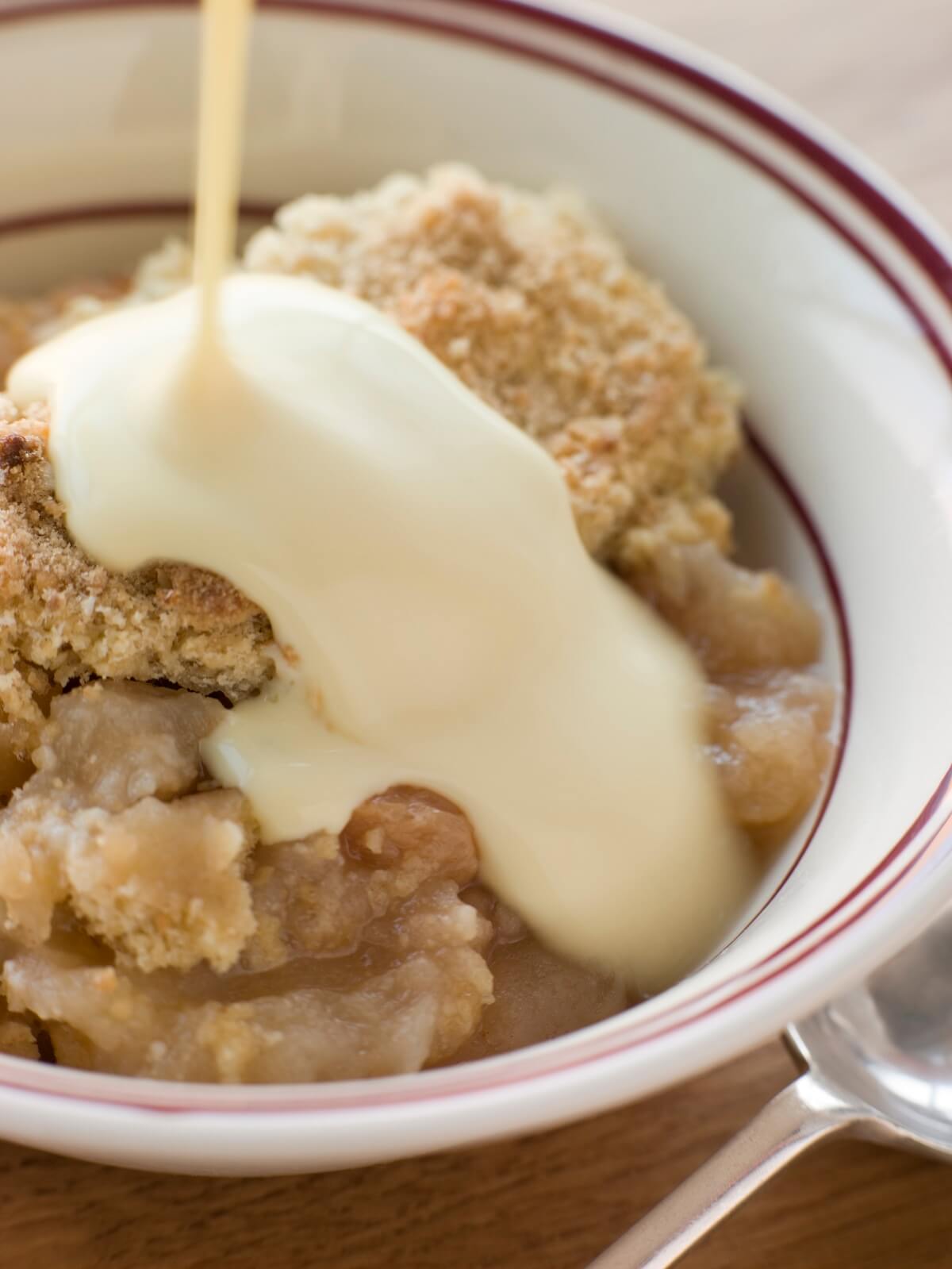
Position
- Prefers a sunny, sheltered position to maximise fruit production and quality
- South- or southwest-facing sites are ideal for warmth and light
- Protect from frost pockets, especially during blossom in spring
Hardiness
- Hardy down to -10°C to -5°C (14°F to 23°F)
- Can tolerate most UK winter conditions but needs cold periods for fruiting
Soil
- Thrives in deep, fertile, and well-draining soil
- Avoid waterlogged or heavily compacted soils
- Neutral to slightly acidic or slightly alkaline (pH 6.0–7.5)
- Lime can be added if the soil is too acidic
- Grab a soil test kit and ensure the perfect conditions for growth
Height
- Typically reaches 4–8 metres (13–26 feet), depending on rootstock and conditions
Seasons of Interest
- Spring (April-May): Large white and pink blossoms, attracting pollinators and adding ornamental value
- Summer (June-August): Dense, green foliage provides shade and structure
- Autumn (September-November): Heavy crops of large green cooking apples ready for harvest, with no significant autumn colour
- Winter: Bare branches offer structural interest in frosty weather
Additional Notes
- Pollination: Not self-fertile – requires pollinators from groups 2 or 3, such as ‘James Grieve’ or ‘Discovery’
- Harvest Period: Fruits mature in late autumn and store well into winter
- Pruning: Requires annual winter pruning to maintain shape, remove dead wood, and encourage fruiting
- Pests/Diseases: Susceptible to apple scab, canker, and codling moth; monitor and treat accordingly
- Thinning: Thin overcrowded fruits in early summer to improve size and quality
- Watering: Water during dry spells, especially in the first few years after planting
- Feeding: Apply a balanced fertiliser in early spring to support healthy growth and fruiting
Apple Bramley’s Seedling : Planting, Pruning, and Harvesting Tips
Bramley’s Seedling is a classic cooking apple that has stood the test of time. First grown in 1809 by Mary Ann Brailsford in Nottinghamshire, this vigorous apple tree is well known for producing large, acidic apples perfect for apple sauce, crumbles, and pies. Its intense flavour and ability to store well make it a favourite among growers and home gardeners.
Whether you want to plant a fruit tree in your garden or expand a small orchard, this guide will provide all the information you need to successfully grow a Bramley apple tree.
Why Grow Bramley’s Seedling?
Apple Bramley’s Seedling is one of the best apples for cooking available. It is a heavy cropper, producing large green apples with white flesh and a distinctive acidic flavour. Due to its outstanding performance in British gardens and commercial orchards, it holds the Royal Horticultural Society Award of Garden Merit.
How to Grow a Bramley’s Seedling Apple Tree
What Are the Best Growing Conditions for Bramley’s Seedling?
Bramley apple trees thrive in sunny sites with well-drained soil. They require space to spread, making them ideal for gardens and orchards. When planted in the correct location, they are long-lived and highly productive.
Does the Bramley’s Seedling Require Pollination?
Bramley’s Seedling is a triploid variety, meaning it cannot be used to pollinate another apple tree. Two other varieties are needed nearby for successful pollination. Good partners include Golden Delicious and Cox’s Orange Pippin. Click here to learn more about apple tree pollination.
Bramley Apple Pollination Group
Bramley apples belong to pollination group 3, meaning they need a compatible apple variety nearby to produce fruit. They’re triploid, so they can’t pollinate other trees. Choose partners like James Grieve or Egremont Russet for successful crops. Plant within 18 metres for effective cross-pollination. Even a healthy Bramley tree may not fruit well without a suitable partner.
How Do I Plant a Bramley’s Seedling Apple Tree?
To ensure the perfect condition for planting, follow these steps:
- Choose a dwarfing rootstock for smaller gardens or a standard rootstock for large spaces.
- Dig a planting hole twice the width of the root ball.
- Position the tree at the correct depth and backfill with soil.
- Grafted onto vigorous rootstocks, these trees will establish well with proper care.
How and When Should I Prune a Bramley Apple Tree?
Prune your Bramley apple tree during the winter when it is dormant to shape its structure, improve airflow, and remove any diseased or damaged branches. Regular pruning encourages strong growth, prevents overcrowding, and ensures the tree remains productive year after year. Maintaining an open canopy and removing excess growth can maximise sunlight exposure, reduce disease risk, and promote larger, healthier apple harvests.
What Common Problems Affect Bramley Apple Trees?
These trees are generally hardy but may be susceptible to apple scab and honey fungus. Good airflow and well-draining soil help prevent these issues.

When Are Bramley Apples Ready to Harvest?
The apples ripen in early-mid October. Pick them when firm and store them well in a cool, dry place.
Can I Grow a Bramley Apple Tree in a Small Garden?
Yes! By selecting a dwarfing rootstock, you can grow this popular variety in a small orchard or large container.
Where Can I Buy a Bramley’s Seedling Apple Tree?
Bramley apple trees are available at local nurseries, garden centres, and online retailers. Look for bare-root or potted trees for planting.
From Darren’s Patch
There’s something wonderfully nostalgic about growing a Bramley’s Seedling in the garden. I’ve always loved how this tree feels like a link to traditional British kitchens — its apples are unbeatable for making a proper crumble or a bubbling apple pie. In my garden, I’ve got a Bramley trained as a half-standard, and each autumn, it delivers a generous crop of big, tart apples perfect for storing. It does need space and good pollination, so I’ve planted it near a Cox’s Orange Pippin and James Grieve to keep things ticking along. If you’ve got the room, it’s well worth the effort — few things are as satisfying as turning your homegrown Bramleys into a warm pudding on a chilly evening. Give it sunlight, space, and a winter prune, and it’ll reward you for years.
![]()
Key Points to Remember:
- Bramley’s Seedling is a top cooking apple with an acidic flavour
- It requires two pollinators for fruit production
- Plant in a sunny site with well-drained soil
- Prune annually to maintain size and encourage heavy crops
- Available at nurseries, garden centres, and online
Apple ‘Bramley’s Seedling’ is a classic cooking apple, thriving in sunny, sheltered UK gardens with fertile, well-drained soil. Its large flowers and bountiful harvests make it a garden favourite, while regular pruning and proper care ensure healthy growth. It is ideal for those who enjoy baking or cooking with homegrown apples. Following these expert tips, you can enjoy growing and harvesting your Bramley’s Seedling apple tree for years.
To see the RHS article, please click here.
Want to learn about other apple varieties? Read about Apple Braeburn here.
For more information on Fruit for your garden, please click here.
Frequently Asked Questions
Q: What is a Malus domestica ‘Bramley’s Seedling’?
A: Bramley’s Seedling is a popular culinary apple cultivar known for its large, tangy fruit, perfect for cooking. This apple tree is a true classic, especially in English apple cookery.
Q: How do I pollinate my Bramley tree?
A: To pollinate Bramley, plant it near other apple varieties that bloom simultaneously. Since Bramley’s Seedling is a triploid, it is not self-fertile and requires pollen from two other apple trees to produce fruit.
Q: What kind of care does a Bramley Seedling need?
A: Bramley trees are relatively easy to grow! They thrive in sunny locations, prefer well-drained soil, and need regular watering. Keep an eye out for pests and diseases to maintain a healthy tree.
Q: When is the best time to plant a Bramley apple tree?
A: The best time to plant a Bramley Seedling is early spring or late autumn. This allows the tree to establish itself before extreme summer heat or winter cold.
Q: Are Bramley apples good for cooking?
A: Absolutely! Bramley apples are well-known as cooking apples, ideal for recipes that require a tart flavour and a soft texture when cooked. They are perfect for pies, crumbles, and sauces.

Q: Can I grow a Bramley Seedling in a container?
A: Yes, you can grow Apple Bramley’s Seedling in a container, but ensure the pot is large enough to accommodate its vigorous roots, so that you know container-grown trees may not produce as much fruit as those planted in the ground.
Q: What does a Bramley apple tree look like when it blossoms?
A: When in bloom, the Bramley tree showcases lovely white flowers, which are pretty ornamental. These blossoms are not just attractive; they also attract pollinators essential for fruit production.
Q: How do I know if my Bramley apples are ripe?
A: You will know your Bramley apples are ripe when they turn a green-yellow colour and soften slightly. A tangy aroma is another sign that they are ready for harvesting.
Q: What other apple varieties can I plant with my Bramley?
A: Good companion trees include English apple varieties like Cox’s Orange Pippin and dessert apples. Ensure they bloom at the same time to help pollinate Bramley.
Q: Where can I buy a Bramley Seedling apple tree?
A: Bramley Seedling apple trees are available at garden centres, nurseries, and online retailers. For your growing conditions, look for bare-root or potted trees.
